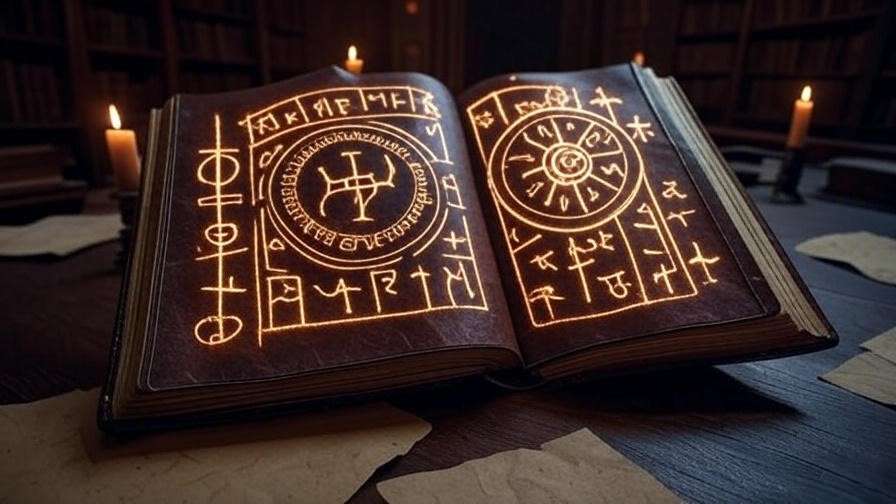Picture yourself standing before a heavy, enchanted door deep within the stone corridors of Hogwarts. The air hums with magic, but the lock before you stands firm, unyielding. With a flick of your wand and the whispered word Alohomora—the iconic lock charm—you could unlock the secrets beyond. In J.K. Rowling’s Harry Potter series, the lock charm is more than just a spell; it’s a gateway to adventure, discovery, and the heart of wizarding life. Whether you’re a lifelong fan, a cosplayer crafting the perfect spell-casting moment, or a trivia enthusiast aiming to ace your next Harry Potter quiz, mastering Alohomora is a must. This comprehensive guide dives deep into the lock charm’s history, mechanics, and practical applications, offering five expert tips to help you wield it with confidence. Backed by insights from the Harry Potter books, films, and Wizarding World lore, this article will empower you to unlock the full potential of Alohomora in your fandom journey.
What Is the Lock Charm (Alohomora)?
Definition and Origin
The lock charm, known as Alohomora, is one of the most recognizable spells in the Harry Potter universe. First introduced in Harry Potter and the Sorcerer’s Stone, it’s the spell Hermione Granger uses to unlock a forbidden door on the third-floor corridor, setting the trio on their path to adventure. The name Alohomora is a blend of the Hawaiian word “aloha” (meaning greeting or farewell) and the Latin “mora” (meaning obstacle), symbolizing the spell’s role in removing barriers. According to Wizarding World, J.K. Rowling crafted this spell to reflect its accessibility, making it a staple in every young witch or wizard’s repertoire.
Alohomora is taught in first-year Charms classes at Hogwarts, under the guidance of Professor Filius Flitwick, a master of spellcraft. Its simplicity belies its utility, allowing witches and wizards to open non-magically locked doors and windows with ease. However, as fans know, its power has limits—magically sealed locks often resist its charm, adding layers of intrigue to its use.
How It Works in the Wizarding World
Casting Alohomora requires three key elements: a precise wand movement, a clear incantation, and focused magical intent. The wand movement is a gentle, clockwise flick, as if turning an invisible key. The incantation, pronounced “A-loh-ho-MOR-ah,” must be spoken clearly to channel the spell’s energy. Most importantly, the caster’s intent—visualizing the lock yielding—fuels the magic, a principle emphasized by Dumbledore in Harry Potter and the Half-Blood Prince when discussing the power of focus in spell-casting.
While Alohomora is beginner-friendly, its limitations are notable. In Harry Potter and the Order of the Phoenix, for example, the spell fails to unlock the Department of Mysteries’ magically protected doors. This highlights a key lesson for aspiring witches and wizards: not every obstacle can be overcome with a single spell, no matter how iconic.

Expert Insight: “The lock charm is a young wizard’s first step into the art of magical problem-solving,” says Professor Flitwick (as imagined through Wizarding World’s depiction of Charms mastery). “Its elegance lies in its simplicity, but its true power requires precision and respect for its limits.”
The History of the Lock Charm
Origins and Discovery
The origins of Alohomora are shrouded in the mists of wizarding history. While J.K. Rowling has not named its inventor, Wizarding World suggests the spell emerged in the 17th century, likely created by a resourceful witch or wizard seeking to bypass mundane locks without resorting to destructive magic. Its adoption spread across magical communities, from Hogwarts to schools like Beauxbatons and Ilvermorny, where unlocking spells are standard in early magical education.
The spell’s global reach reflects its universal appeal. In non-Western magical traditions, similar charms exist, such as the Japanese Akero, which shares Alohomora’s intent but uses a different incantation. This cross-cultural resonance underscores the lock charm’s place as a cornerstone of practical magic.

Notable Uses in the Harry Potter Series
Alohomora shines in several pivotal moments throughout the Harry Potter series, each showcasing its narrative and emotional weight. In Sorcerer’s Stone, Hermione’s use of the lock charm to access the third-floor corridor marks her as a quick-thinking problem-solver, cementing her role in the trio. In Chamber of Secrets, Harry attempts Alohomora on the entrance to the Chamber, only to find it ineffective against ancient magical protections—a reminder of the spell’s boundaries. By Deathly Hallows, the spell’s failure against the Horcrux cave’s defenses highlights the escalating stakes of the series.
These moments do more than advance the plot; they reveal character growth. Hermione’s confidence with Alohomora reflects her academic prowess, while Harry’s struggles underscore his reliance on instinct over technical skill. For fans, these scenes make the lock charm a symbol of both opportunity and limitation.
Controversies and Ethical Questions
In the Harry Potter fandom, Alohomora sparks lively debates about ethics. Is it right to teach young wizards a spell that can bypass privacy? On platforms like Reddit’s r/harrypotter, fans argue whether Alohomora represents a breach of trust when used without permission. In the books, characters like Draco Malfoy exploit similar spells for nefarious purposes, raising questions about magical responsibility.
For example, should Hogwarts students use Alohomora to sneak into restricted areas, as Harry, Ron, and Hermione often do? While their intentions are noble, the spell’s potential for misuse invites scrutiny. This ethical tension adds depth to Alohomora’s role in the Wizarding World, making it a topic ripe for fan discussion.
5 Essential Tips to Master the Lock Charm
Tip 1: Perfect Your Wand Movement
Mastering Alohomora begins with the wand movement—a smooth, clockwise flick that mimics turning a key. Based on descriptions in the Harry Potter books, the motion should be fluid, not jerky, to channel the spell’s energy effectively. For fans engaging in cosplay or role-playing, practicing this movement can enhance authenticity.
Practice Exercise: Hold a wand (or a stick!) and trace a small, clockwise arc in the air. Imagine a lock clicking open as you move. Repeat 10 times daily to build muscle memory. For inspiration, watch Hermione’s wand technique in the Sorcerer’s Stone film—her precision is a model for aspiring spell-casters.

Tip 2: Master the Incantation
The incantation “A-loh-ho-MOR-ah” is the heart of the lock charm. Mispronunciation can cause the spell to fizzle, as seen in early Hogwarts classes where students struggle with new spells. For fans, clear enunciation adds realism to role-playing or fan fiction.
Practice Tip: Break the word into syllables and practice slowly, emphasizing the “MOR” sound. Record yourself and compare it to audio clips from the Harry Potter films (available on platforms like Audible). For fun, host a spell-casting contest with friends to perfect your pronunciation.
Tip 3: Understand Magical Intent
In the Harry Potter universe, intent is the invisible force behind every spell. Dumbledore’s advice in Half-Blood Prince—“It is the unknown we fear when we look upon death and darkness, nothing more”—applies here: clear intent overcomes obstacles. When casting Alohomora, visualize the lock yielding to your will.
Mindfulness Exercise: Before “casting” in a role-playing scenario, close your eyes and picture a door unlocking. This mental focus mirrors the magical intent required in the Wizarding World and enhances your immersion in fandom activities.
Tip 4: Know When Alohomora Won’t Work
Not every lock yields to Alohomora, a lesson Harry, Ron, and Hermione learn the hard way. In Harry Potter and the Half-Blood Prince, the spell fails against the Horcrux cave’s enchanted entrance, protected by powerful dark magic. Similarly, in Order of the Phoenix, the Department of Mysteries’ magically sealed doors resist the lock charm. Understanding these limitations is crucial for fans aiming to authentically replicate Alohomora in role-playing or storytelling.
Practical Tip: When crafting fan fiction or designing Harry Potter-themed games, incorporate scenarios where Alohomora fails to add realism. For example, a locked Gringotts vault might require an alternative spell like Reducto (to blast obstacles) or Colloportus (to counter-lock a door). Study the books for inspiration: note how J.K. Rowling uses magical barriers to heighten tension and drive plot development.
Tip 5: Practice in Safe, Ethical Contexts
In the Harry Potter universe, using Alohomora irresponsibly can lead to trouble—think of the trio sneaking into restricted areas. For fans, practicing the lock charm in fandom activities should reflect the same ethical mindfulness. Whether you’re role-playing at a Harry Potter convention or designing an escape room, use Alohomora in ways that respect boundaries and enhance fun.
Activity Idea: Create a Harry Potter-themed escape room where participants “cast” Alohomora to solve puzzles. For example, hide a clue behind a “locked” door (a prop with a simple latch) and let players use a wand and incantation to “unlock” it. This keeps the experience immersive and ethical, avoiding real-world privacy concerns. Check out fan communities like MuggleNet for escape room templates inspired by Hogwarts.
Beyond Alohomora: Advanced Unlocking Spells
Spells for Complex Locks
While Alohomora is the go-to for everyday locks, the Wizarding World offers advanced spells for tougher challenges. Portaberto, mentioned in Harry Potter lore, splinters wooden doors, making it a riskier but effective alternative. Aberto, seen in Fantastic Beasts and Where to Find Them, forces doors open with greater power but requires advanced skill. These spells highlight the diversity of unlocking magic, appealing to fans who want to expand their spell-casting repertoire.
Comparison Table:
| Spell | Difficulty | Wand Movement | Use Case |
|---|---|---|---|
| Alohomora | Beginner | Clockwise flick | Non-magical locks |
| Portaberto | Intermediate | Sharp downward slash | Wooden doors |
| Aberto | Advanced | Broad circular sweep | Heavy or resistant doors |
Fan Application: In tabletop RPGs like a Harry Potter-themed Dungeons & Dragons campaign, use Portaberto for dramatic moments, such as breaking into a forbidden library. Reference Fantastic Beasts for Aberto’s cinematic flair to inspire your storytelling.

Warding Charms and Counter-Spells
Magical locks often come with protections that block Alohomora. Colloportus, the locking spell, seals doors against basic unlocking attempts, as seen in Order of the Phoenix when Hermione uses it to trap Death Eaters. More advanced wards, like those guarding Voldemort’s Horcruxes, require unique counter-spells or rituals beyond the scope of Alohomora.
Fictional Lesson: Imagine a Defense Against the Dark Arts class at Hogwarts. Professor Lupin might say, “Alohomora is a fine spell, but against a dark wizard’s wards, you’ll need wit as much as magic.” For fans, this translates to creative problem-solving in games or fan fiction—combine Alohomora with other spells or tactics to overcome obstacles.
The Lock Charm in Fandom and Real-World Applications
Alohomora in Fan Fiction and Role-Playing
The lock charm is a favorite in Harry Potter fan fiction and role-playing games for its versatility. In fan fiction, Alohomora often serves as a plot device to reveal secrets, such as a hidden diary in a locked drawer or a forbidden room in Hogwarts. On platforms like Archive of Our Own, stories tagged with “Alohomora” frequently explore themes of discovery and adventure.
Writing Prompt: Create a scene where a Hogwarts student uses Alohomora to uncover a clue about a lost artifact. For example: “With a trembling hand, Eliza whispered Alohomora, and the ancient chest clicked open, revealing a map etched with glowing runes.” Share your story on fan communities like FanFiction.net for feedback.
In role-playing, Alohomora adds authenticity to live-action games or cosplay. At events like LeakyCon, fans might “cast” the spell during interactive quests, enhancing immersion. Practice the wand movement and incantation to stand out at your next Harry Potter convention.
Real-World Analogies
Alohomora’s symbolism—unlocking barriers—resonates beyond the Wizarding World. In real life, the spell mirrors problem-solving and critical thinking. Just as Hermione uses Alohomora to access the third-floor corridor, fans can approach challenges with creativity and persistence. For example, tackling a complex project at work or school requires the same focus and intent as casting the lock charm.
Activity Suggestion: Design a Harry Potter-themed puzzle game for friends, where “casting” Alohomora (through a verbal command or gesture) unlocks a clue. This could be part of a birthday party or fan meetup, blending magic with real-world fun. Websites like The Leaky Cauldron offer ideas for Harry Potter-inspired activities.
Community Spotlight
The Harry Potter fandom thrives on communities that celebrate spells like Alohomora. On Reddit’s r/harrypotter, fans share theories about the spell’s origins and debate its ethics. The Wizarding World website hosts quizzes and articles that dive into spell lore, while fan clubs like the Harry Potter Alliance organize events where Alohomora inspires creative challenges.
Call-to-Action: Join the conversation! Share your favorite Alohomora moment from the books or films in the comments below, or tweet it with #AlohomoraChallenge. Check out MuggleNet’s forums for more spell-casting discussions.

Common Mistakes and How to Avoid Them
Mispronouncing the Incantation
A common rookie mistake is mangling Alohomora’s pronunciation, which can cause the spell to fizzle in the Harry Potter universe. Fans practicing for cosplay or trivia should avoid stressing the wrong syllable (e.g., saying “AL-oh-mora” instead of “A-loh-ho-MOR-ah”).
Fix It: Use a phonetic guide: A-loh-ho-MOR-ah. Practice with a friend or record yourself to ensure clarity. For inspiration, rewatch the Sorcerer’s Stone film scene where Hermione casts the spell flawlessly.
Overreliance on Alohomora
Assuming Alohomora can unlock anything is a trap. In Deathly Hallows, Harry’s attempt to use it on the Horcrux locket fails, showing the need for versatility. Fans crafting stories or games should mix in other spells to keep narratives dynamic.
Fix It: Study related spells like Reducto or Diffindo for alternative solutions. In role-playing, have a backup plan, like a puzzle-solving tactic, if Alohomora fails.
Ignoring Ethical Considerations
Using Alohomora to invade privacy—real or fictional—can backfire. In the books, the trio’s use of the spell often leads to consequences, like triggering Filch’s wrath. Fans should ensure their use of Alohomora in games or stories respects boundaries.
Fix It: In fandom activities, set clear rules for “casting” Alohomora. For example, in an escape room, ensure all “locked” props are meant to be opened, avoiding discomfort.
FAQs About the Lock Charm
- Can Alohomora unlock any lock?
No, it’s ineffective against magically protected locks, like those in the Department of Mysteries or the Horcrux cave. - Who invented Alohomora?
The inventor is unknown, but it’s a standard spell taught at Hogwarts, per Wizarding World. - How do you practice Alohomora in real life?
Practice through cosplay, role-playing, or Harry Potter-themed games, focusing on wand movements and incantation. - Are there stronger unlocking spells?
Yes, spells like Portaberto and Aberto tackle specific or resistant locks. - Why does Alohomora fail sometimes in the books?
Advanced magical protections, like Voldemort’s wards, block the spell’s effects.
The lock charm, Alohomora, is more than a spell—it’s a symbol of discovery, ingenuity, and the magic of overcoming obstacles. By perfecting your wand movement, mastering the incantation, focusing your intent, knowing the spell’s limits, and practicing ethically, you can wield Alohomora like a true Hogwarts student. Its rich history, from its mysterious origins to its pivotal role in the Harry Potter series, makes it a fan favorite. Whether you’re writing fan fiction, role-playing at a convention, or designing a Harry Potter-themed game, these five tips will help you unlock the spell’s full potential.













